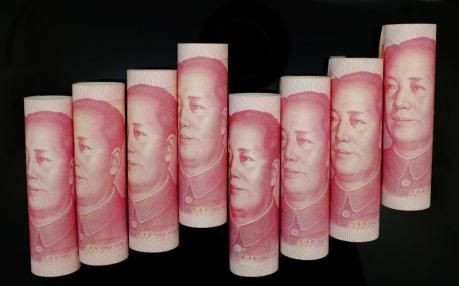Yuan Overtakes Euro As Second-Most Used Currency In International Trade Settlement: SWIFT

The Chinese yuan surpassed the euro in October to become the world's second-most-used currency in international trade and finance, the Society for Worldwide Interbank Financial Telecommunication (SWIFT) said in a statement on Tuesday.
The share of the yuan, or renminbi, in trade finance as measured by the Letters of Credit and Collections, grew to 8.7 percent in October, up from 1.9 percent in January 2012, data from the global transaction services organization showed. The yuan now ranked behind the U.S. dollar, which had a share of 81.08 percent, while the euro’s share dropped to 6.6 percent in October, from 7.9 percent in January 2012.
"The [renminbi] is clearly a top currency for trade finance globally and even moreso in Asia," Franck de Praetere, SWIFT's Asia Pacific head of payments and trade markets, told Reuters.
The top five countries using the yuan for trade finance in October were China, Hong Kong, Singapore, Germany and Australia. However, the yuan’s share as a payments currency declined slightly in October to 0.84 percent from 0.86 percent in September, according to SWIFT.
Aiming to reduce its reliance on the U.S. dollar and increase the yuan’s global clout, China has taken several measures, including establishing offshore renminbi centers and entering into bilateral swap agreements (BSAs) with several countries to promote the international availability and accessibility of the currency.
Since December 2008, the People’s Bank of China (PBoC) signed or renewed BSAs with 19 central banks. Last month, in one of China’s largest trade deals outside Asia, PBoC and the European Central Bank signed a $57 billion currency-swap deal that will allow European countries to conduct trade and investments in yuan and euros.
According to industry experts, the yuan’s use in international trade has been growing, despite its partial convertibility when compared with other dominant currencies.
"Businesses trading with China that fail to seize the opportunity of using the yuan may be losing out to their competitors. It's not a level playing field," HSBC said, according to a CNBC report. The bank expects the yuan to account for 30 percent of China’s external trade settlement by 2015. Currently, 20 percent of the country's trade is settled in yuan, up from 12 percent in 2012.
The yuan has appreciated 2.3 percent against the U.S. dollar this year, and was the best performer among Asian currencies, according to data compiled by Bloomberg.
© Copyright IBTimes 2025. All rights reserved.






















